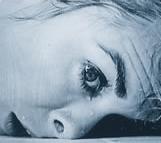CUT/Film as Found Object
dal 24/6/2005 al 11/9/2005
Segnalato da
Christian Marclay
Pierre Huyghe
Douglas Gordon
Candice Breitz
Christian Marclay
Jennifer McCoy
Kevin McCoy
Paul Pfeiffer
Omer Fast
Michael Joaquin Grey
Margaret Andera
Stefano Basilico
24/6/2005
CUT/Film as Found Object
Milwaukee Art Museum, Milwaukee
14 video works by some of today's most influential artists

CUT/Film as Found Object, on view at the Milwaukee Art Museum June 25 - September 11, 2005 is a fascinating installation consisting of 14 video works by some of today's most influential artists. CUT explores how contemporary artists use excerpts from pre-existing films and television to create new narratives, different emotional contexts and new musical scores. Artists featured include Christian Marclay, Pierre Huyghe and Douglas Gordon. The exhibition is organized by the Milwaukee Art Museum with the assistance of the Museum of Contemporary Art (MOCA), North Miami. CUT/Film as Found Object had its world premiere November 13, 2004 - January 30, 2005 at the Museum of Contemporary Art, North Miami and was on display during Art Basel Miami Beach contemporary art fair in December.
"The artists in this exhibition are creating some of today's most innovative work in the fields of film and video," said Milwaukee Art Museum curator Margaret Andera. "We are pleased to present this ground-breaking work in Milwaukee."
In this intriguing exhibition, artists manipulate the most familiar of media, the moving picture, film and television, restructuring reality to make the familiar unfamiliar and providing the viewer the opportunity to comprehend a new reality. The emphasis is not on the use of found footage itself, but on its manipulation to create a new work.
The 14 works in the exhibition, each housed in an independent theatre or viewing room, explore a wide range of variations and methodologies. Indebted to the appropriation strategies of the '80s and sampling in hip hop and rap music of the '90s, these artists are united by their gestural use of the editing.
The artists in CUT have taken the material of their reality, the movie and the news program, and manipulated it to reveal its power to communicate and shape reality. Whether through looping, repetition, erasure or compression, their active manipulation of their medium recalls the importance that action was given by Richard Serra in 1968, when he published Verb List, a list of actions that a sculptor could use to create sculpture - to roll, to crease, to fold, to cut, etc. CUT explores the actions through which artists create video.
The exhibition is curated by Stefano Basilico, former MAM adjunct curator of contemporary art. The exhibition is presented by Friends of Art, with additional support from the Wisconsin Arts Board with funds from the State of Wisconsin.
The accompanying catalog, CUT/Film as Found Object by Stefano Basilico, 115 pages, $24.95, is available in the MAM Store.
Works in the exhibition include:
·Soliloquy Trilogy (2002) by Candice Breitz
·Video Quartet (2002) and Telephone (1995) by Christian Marclay
·Ellipse (1998) by Pierre Huyghe
·24 Hour Psycho (1993) and Black and White (Babylon) (1996) by Douglas Gordon
·Horror Chase (2002) and Learning from Las Vegas (2003) by Jennifer and Kevin McCoy
·The Long Count (Rumble in the Jungle) (2001); The Long Count (I Shook up the World) (2001); The Long Count (Thrilla in Manila) (2001); and Live Evil (2002) by Paul Pfeiffer
·CNN Concatenated (2002) by Omer Fast
·The Blink (2000-2001) by Michael Joaquin Grey
Image: Douglas Gordon, 24 Hour Psycho, 1993. Video projection. 24 hours.
---
About Face: Toussaint L'Ouverture and the African-American Image
June 30 - November 27, 2005
Decorative Arts Gallery
Toussaint L'Ouverture was a former slave in Haiti who led the first successful slave revolt in the Americas in the 1790s. Since that time he has been a symbol of power and rebellion in the Atlantic world, hated and feared by opponents of racial equality, but also revered by the black community in Haiti and throughout the African diaspora. Among the many important commemorations of Toussaint is a group of portrait pitchers that are among the most striking of American ceramics. Made about 1840, probably for sale to abolitionists in the Boston area, these pitchers are boldly sculpted representations of an African-American male with a French tri-corner hat (one of Toussaint's most recognizable attributes). To modern eyes the portrait - with its thick lips, wide, flat nose, a heavy brow and stylized curling hair - is exaggerated in a fashion that suggests racial stereotyping. Yet this representation, which today seems like caricature, may have been meant to lionize Toussaint, emphasizing his dangerous strength at a time when fighting slavery was still a desperate struggle. The exhibition considers these extraordinary objects from several perspectives, situating them in four contexts that illuminate their meaning: historical representations of Toussaint (including works by the great 20th century African-American painter Jacob Lawrence); other abolitionist propaganda ceramics; derogatory racial images of the 19th century; and pots made by African-Americans as a way of shaping their own identities, including face jugs. This range of material - some of it beautiful, some of it disturbing - will demonstrate the continuing resonance of this Haitian leader and American audiences, bridging past and present perceptions.
Milwaukee Art Museum
700 N. Art Museum Drive Milwaukee, WI 53202
Free with general admission



